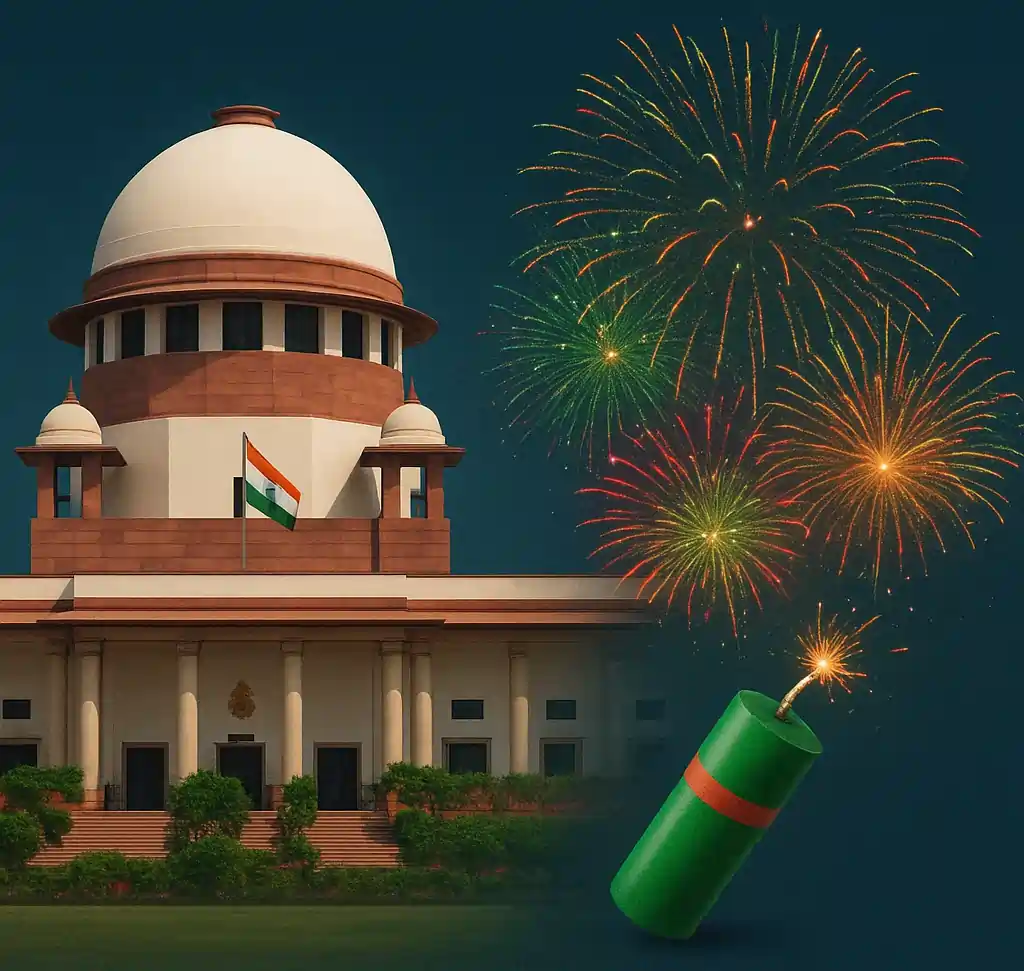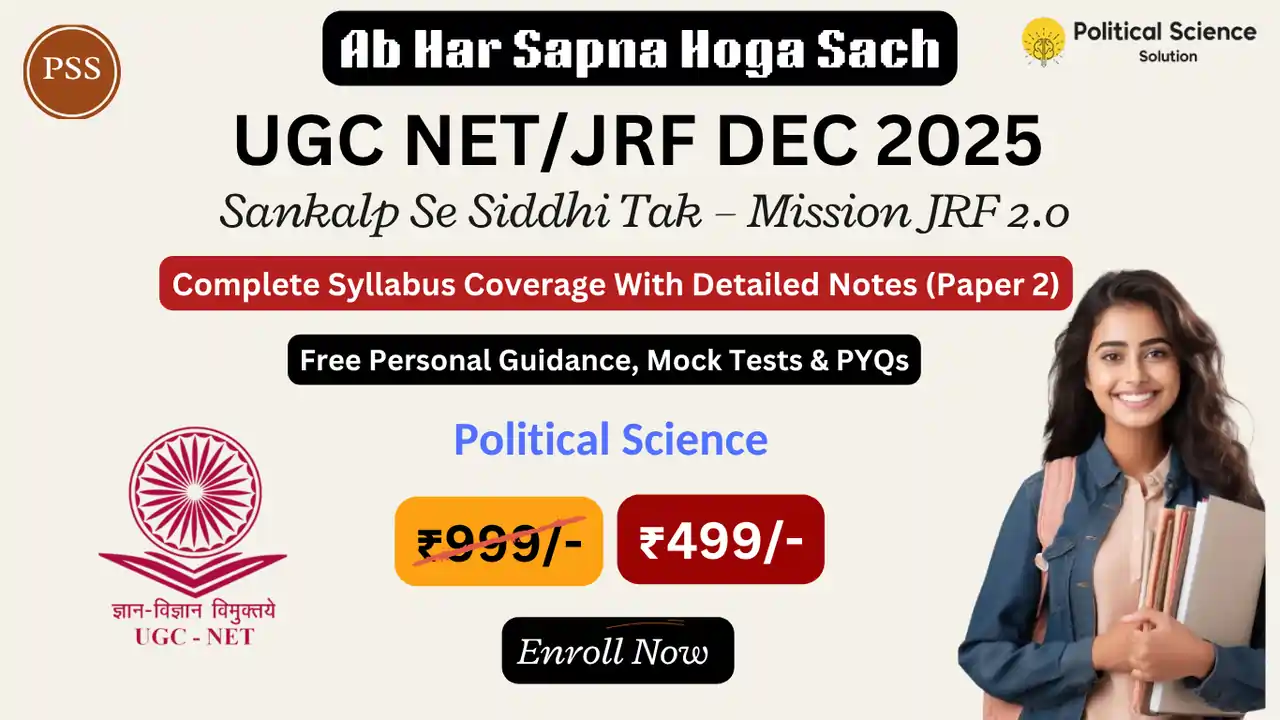New Delhi: In a significant ruling just days before Diwali, the Supreme Court of India has provided temporary relief from the complete firecracker prohibition in the Delhi-National Capital Region (NCR), authorizing the limited sale and bursting of eco-friendly green crackers. This decision aims to harmonize environmental safeguards with cultural festivities, marking a shift from earlier stringent bans. As air pollution concerns loom large over the capital during winter, this “test case” approach could shape future policies on firecracker usage.

Background on the Firecracker Ban and Its Evolution
The ongoing battle against air pollution in Delhi-NCR has long centered on firecrackers, especially during Diwali when emissions spike dramatically. The story traces back to the landmark 2018 Supreme Court judgment in Arjun Gopal vs Union of India, which first introduced the concept of green crackers as a safer alternative to traditional ones. In that case, the court mandated that only crackers with reduced emissions—known as improved or green crackers—and adhering to noise standards could be produced and sold moving forward.
Following this, the Delhi government implemented progressively tougher measures. On October 14, 2024, it announced a ban on the manufacture, sale, and use of all firecrackers until January 1, 2025. This was later broadened to a full-year restriction, encompassing even green crackers, under the influence of a Supreme Court bench led by Justice A S Oka. The Centre, however, advocated for easing the ban to permit green variants during key festivals.
The recent relaxation comes amid arguments that absolute bans have been ineffective, leading to smuggling of more hazardous conventional crackers. The Supreme Court bench, comprising Chief Justice of India B R Gavai and Justice K Vinod Chandran, noted that there has been “no substantial difference” in the Air Quality Index (AQI) between 2018—when green crackers were allowed—and 2024 under the ban, except during the COVID-19 period when pollution levels dropped sharply due to lockdowns.
Concerns from neighboring states amplified the call for balance. The Haryana government highlighted that 14 out of its 22 districts fall within the NCR, meaning nearly 70% of the state is impacted by the ban. Similar representations came from Uttar Pradesh and Rajasthan, emphasizing the widespread effects on livelihoods and traditions.
Key Details of the Supreme Court’s October 15, 2025, Order
The court’s order, issued on October 15, 2025, and updated in reports by October 16, explicitly allows the sale of NEERI-approved green crackers from October 18 to October 20, 2025. Usage is confined to two specific days—October 19 and 20—within restricted time slots: 6 am to 7 am and 8 pm to 10 pm. This is framed as a “temporary measure” and a “test case basis,” drawing directly from the 2018 Arjun Gopal precedent.
Emphasizing a “balanced approach,” the bench stated: “In such a case, we have to take a balanced approach, taking into account the conflicting interests and permit in moderation, while not compromising the environmental concerns arising.” The decision acknowledges the evolution of green crackers over the past six years, crediting the National Environmental Engineering Research Institute (NEERI), a prestigious body under the Council of Scientific and Industrial Research (CSIR), for advancements that have substantially lowered emissions.
Strict Regulations on Sale and Purchase
To prevent misuse, the court has imposed rigorous controls:
- Licensed Traders Only: Sales are permitted solely through authorized outlets run by licensed traders. Products must be manufactured by entities registered with NEERI and possessing a valid license from the Petroleum and Explosives Safety Organisation (PESO).
- Confiscation of Non-Compliant Items: Any firecrackers not produced by registered manufacturers will be seized immediately. The use of banned chemicals like barium nitrate, arsenic, lithium, or mercury is strictly prohibited, and non-NEERI-approved items will face confiscation if found in possession or for sale.
- Ban on E-Commerce and External Supplies: No online sales via platforms like Flipkart or Amazon are allowed; any such shipments will be detained and confiscated. Additionally, no firecrackers from outside the NCR region can enter, ensuring local control.
- Designated Sale Locations: District Collectors or Commissioners, in coordination with District Superintendents of Police, must identify specific spots for sales and publicize them widely.
- Prohibition on Series Crackers: The manufacture or sale of joined firecrackers (known as laris) is completely banned.
- License Renewals: Traders whose licenses expired or were revoked post-ban will have them renewed for the stipulated period by statutory authorities.
Enforcement Mechanisms: Patrol Teams and Monitoring
Recognizing enforcement challenges, the court has mandated robust oversight:
- Joint Patrol Teams: Police, in consultation with district administrations, will form teams including nominees from regional offices of State Pollution Control Boards. These units must familiarize themselves with NEERI-uploaded green cracker details, registration information, and manufacturer-specific QR codes.
- Regular Checks and Sampling: Teams will conduct ongoing surveillance at designated sites to verify only permitted, QR-coded products are sold. Random samples will be collected and sent to PESO for analysis.
- Penalties for Violations: Offenders involved in manufacturing or selling prohibited items will face penalties, including cancellation of PESO or NEERI licenses/registrations.
Furthermore, the Central Pollution Control Board (CPCB), working with State Pollution Control Boards and their regional offices, must monitor AQI across NCR districts from October 14, 2025, to October 25, 2025. A daily report on air quality will be submitted to the court, serving as data for evaluating this pilot relaxation’s impact.
What Are Green Crackers? A Closer Look
Green crackers, developed by CSIR-NEERI, represent an innovative response to pollution from fireworks. Though not entirely emission-free, they reduce particulate matter (PM) by at least 30% compared to conventional types and omit toxic chemicals such as barium nitrate, arsenic, lithium, and mercury. First mandated in the 2018 Arjun Gopal ruling, which outlawed traditional firecrackers, these variants aim to minimize environmental harm while preserving festive joy.
The court’s order references NEERI’s contributions, noting how green crackers have improved over time. For Delhi-NCR residents, this means QR-coded green crackers can be burst this Diwali, but only at approved spots and times.
Reactions from Stakeholders and Government Officials
Delhi Chief Minister Rekha Gupta welcomed the verdict, stating: “It is very important to strike a balance between traditions and environment. I thank the Supreme Court for issuing this order, taking into account the sentiments of the people of Delhi. I assure you that the people of Delhi and the government will keep the environment safe while we celebrate this festival. I express heartfelt thanks to the Supreme Court.”
The Centre, represented by Solicitor-General Tushar Mehta, had urged relaxation for Diwali, Christmas, and New Year’s Eve, proposing a detailed enforcement plan. Fireworks manufacturers’ associations in Sivakasi have hailed the order, viewing it as a lifeline for the industry amid bans.
Amicus curiae Uttara Babbar assisted the court, highlighting that the ban hadn’t curbed bursting, leading to smuggling of deadlier crackers and public injuries. She critiqued enforcement as “lip service,” pointing to PESO’s lack of Delhi testing facilities and CAQM reports on QR code misuse by unlicensed producers.
Expert Opinions and Concerns on the Relaxation
While the judgment seeks equilibrium, experts offer mixed views. Environmental lawyer Ritwick Dutta, co-founder of Legal Initiative for Forest and Environment, praised the balance but advocated for a phased ban on hazardous products: “The court has tried to adopt a balanced approach towards public health. However, my personal view is that if someone is engaged in the production of a hazardous product, a phased ban should be considered instead of a balancing act.”
Debadityo Sinha, Senior Resident Fellow at Vidhi Centre for Legal Policy, warned that easing the ban might reverse pollution gains and contradict the precautionary principle: “Efforts must be made to control all sources of pollution at their origin, including episodic events such as firecracker bursting, which cause sharp short-term spikes in air pollution.” He stressed that green crackers aren’t “pollution-free,” lacking comprehensive impact assessments and reliable verification mechanisms. Enforcement under a selective regime, he added, would be tougher than a total ban.
The court itself acknowledged past enforcement issues, noting that even under Delhi’s complete prohibition, fireworks persisted year-round. This reversal arrives just five months after Justice Abhay S. Oka’s bench upheld the blanket ban, deeming temporary curbs ineffective.
Implications for Future Policy and Public Health
This Supreme Court directive could act as a pilot for evidence-based environmental policymaking, with CPCB’s monitoring data potentially guiding adjustments. It underscores the tension between cultural rights—protected under the right to livelihood for industry workers—and public health in pollution-choked Delhi-NCR.
As Diwali approaches on October 19-20, 2025, residents must adhere to guidelines to avoid penalties. The focus on QR-coded, NEERI-approved green crackers, restricted timings, and no e-commerce sales aims to curb smuggling and ensure accountability. However, challenges in distinguishing green from conventional crackers during peak sales persist, as experts highlight.
For fireworks enthusiasts and environmentalists alike, this ruling tests whether regulated moderation can succeed where outright bans faltered. With AQI monitoring underway from October 14, the coming weeks will reveal if this balanced strategy mitigates Diwali pollution spikes without compromising festivities.

